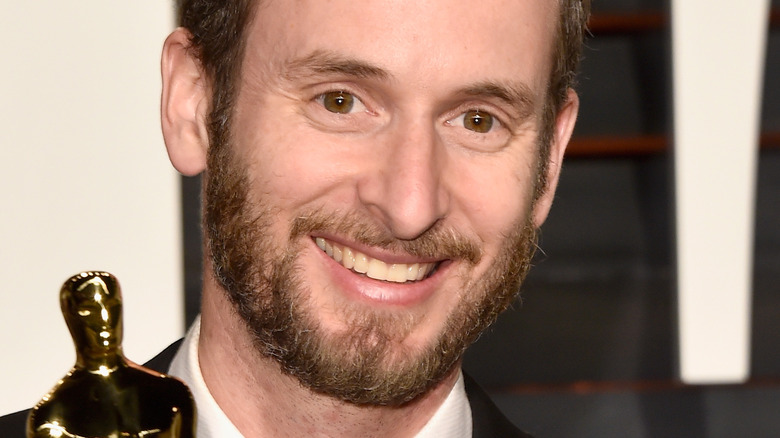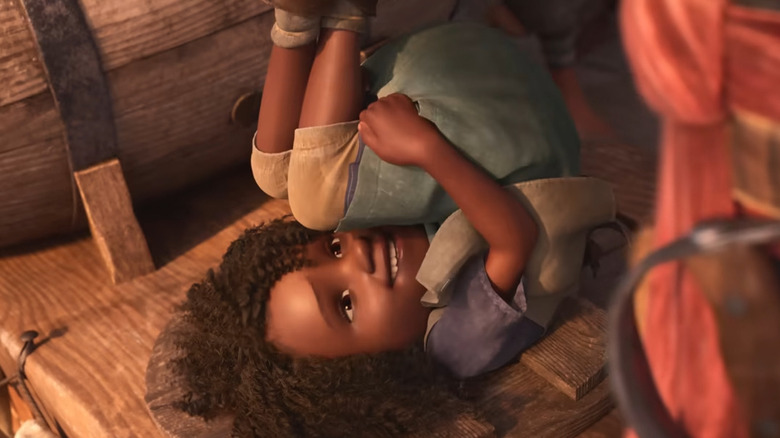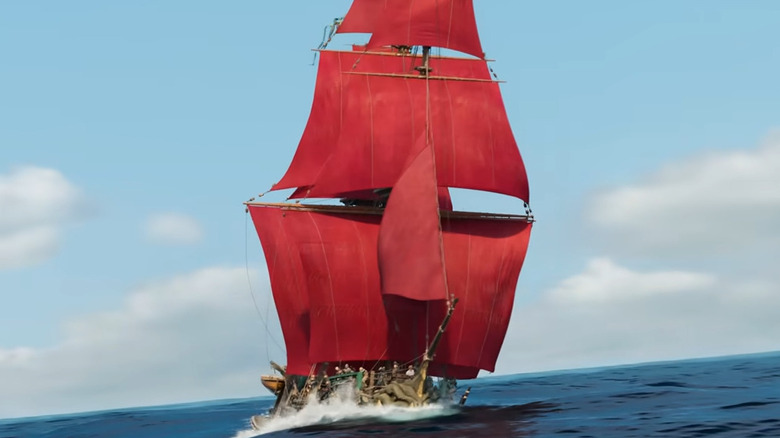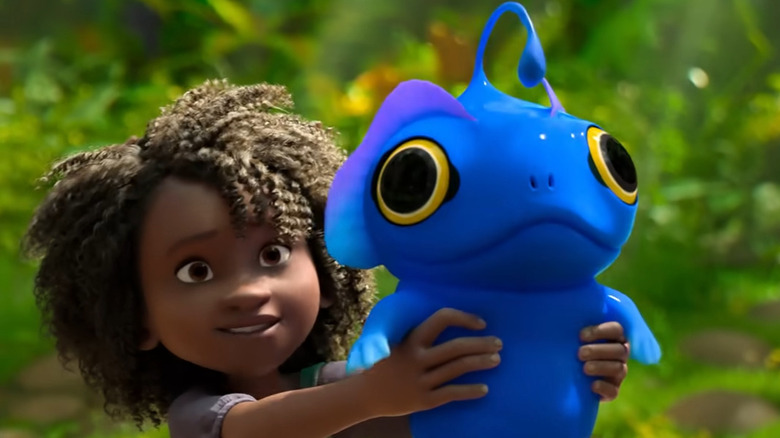Chris Williams Dives Into The Making Of The Sea Beast - Exclusive Interview
Anyone who loved animation in the 2000s owes a debt of thanks to Chris Williams. He's worked in one capacity or another on various Disney animated projects, eventually working his way up to be a co-director and co-writer of 2008's "Bolt." His work landed him an Academy Award nomination, and he would eventually take him the coveted statuette for directing "Big Hero 6," which won for best animated feature.
He would next co-direct 2016's "Moana," but there's another seafaring adventure Williams has up his sleeve that's very much worth people's attention. "The Sea Beast" sees Williams depart from his usual homestead of Disney to create something wholly unique for Netflix. "The Sea Beast" follows a young girl who has big ambitions to be the deadliest sea monster hunter, and to do so, she'll stow away on the most famed monster hunter of them all — Jacob Holland.
Netflix's latest animated effort is fun for the whole family, and Williams has once again delivered on blending epic adventure with heartwarming visuals. During Netflix's Geeked Week event, Looper did an exclusive interview with Williams to talk about making the film during the pandemic and what exactly the hardest part about animating these seafaring films is. It's not what you think.
On making The Sea Beast during the pandemic
Did you start production on the film prior to the pandemic and then had to make that transition?
Exactly.
What were the growing pains for that?
I'm really glad that we got to spend about a year and a half working with the story team and the visual development team, and started building a foundation for the story and the look of the movie before the pandemic sent us all home. We got to establish a lot of those relationships, and we got to build a pretty strong spine to the story. The story continued to evolve while we were working remotely, but I was glad we got to know each other by working in the same room together before all that happened.
Unfortunately, we were sent home just as the crew was starting to ramp up as far as animation, and lighting, and those sorts of things. A lot of the crew members, I still have not met. Most of the crew members on the movie, I still have not met in person. I'm looking forward to that because I want to thank them in person for all their hard work.
As far as the challenges go, on one hand, the technology made it surprisingly seamless. We were able to pick up and start working within days and continue to work on the movie. The tricky part was always that feeling of connection and being able to collaborate because animation is the ultimate collaborative art form. You have to be able to brainstorm and problem solve together as a group. It's a little more challenging, as everybody knows now, when you're doing it through Zoom. At the end of the day, it was slightly more draining, slightly more exhausting than it would normally be.
The crew was 100% committed and fought through those challenges. There's always challenges. It's never easy making an animated movie. They fought through challenges, and they made something that ... they had a sense that there was an opportunity here to make something special, and they seized it. We overcame.
The connection between Moana and The Sea Beast
You worked previously on "Moana," which had to do with the ocean and water, and now "The Sea Beast." Is that a theme you're looking to explore even further into your career?
You think I would've learned my lesson because setting a movie on water is really hard. An animated movie on water is really hard, and it invites some new challenges. I remember, in particular, the ropes on Moana's boat were one of the big technical challenges of "Moana." Those ropes were the bane of our existence, and she only had a handful of ropes on her boat. Here we are making "The Sea Beast," and there's literally hundreds and hundreds of ropes on these tall ships, but we wanted it to feel really realized and authentic. We had to figure out how to manage all those ropes. Fortunately, our crew knew that was a potential pitfall, so [we] spent a lot of time developing the technology and figuring out how the artists could deal with something as challenging as ropes.
I think we solved it. When you see the movie, you'll see we've figured out ropes, because there's plenty of ropes.
How was it figuring out the water? I know with "Moana," the water looked incredibly realistic. Were you able to borrow from that and bring it over into "Sea Beast?"
In this case, we were working with Sony [Pictures] Imageworks up in Vancouver, and they have experience working with big movies with a lot of spectacle, giant creatures, and water. They've taken on things like this before. It is incredible when you see a ship or a creature displacing that much water, and it feels so real.
[It's] this combination of the technology, but also the artistry. You're still making artistic choices, and they're really skilled at that. That's one of the many things that they're very good at, thank goodness, because this movie ... If the water didn't look good or if the ropes didn't look good, we would have been in big trouble.
The inspiration behind The Sea Beast
Other than learning how intricate it is to animate ropes and water, what do you hope people get out of "The Sea Beast?"
Oh my gosh. That's such a big question. On some level, what I would love is the experience that I had with the movies that I loved growing up. I love being immersed in a big world. When I was a kid, I loved the big adventure stories. I loved "Raiders Of The Lost Ark," [and] "Star Wars." "King Kong" was one of the movies that lit a fire for me and made me want to make movies. It was something about the idea of the uncharted island, the voyage in the unknown. That was so exhilarating for me. I remember being struck by the fact that King Kong was a character in it. It was of enormous scale, but you connected with him as a character, and you felt empathy. The end of that movie's emotional. They pulled it off.
I hope you feel as excited by this movie as I was by "King Kong." It's dangerous to compare your own movie to some of the great classics of all time. I understand that. Beyond that, I wanted the movie to feel really immersive and really deep. We were bringing movies like "Lord of the Rings" [and] "Blade Runner" or shows like "Game of Thrones" as examples of movies that had a world that felt ... completely comprehensive beyond the story being told. There was a sense of history that led up to the moment the story began.
I wanted that for this movie more than any other movie I've ever worked on. I want people to get lost in this world. I hope people get that experience of being able disappear in this world for a while. Then, I hope people are entertained by it. I love action-adventure stories. I love big action set pieces. I love "[Mad Max: ]Fury Road," and so I really wanted to create set pieces that could measure up with some of my favorites. I hope that's what people get from it.
I don't suppose we'll see someone playing a guitar with water shooting out of it then.
[Laughing] Yeah. Wait and see.
"The Sea Beast" is now streaming on Netflix.
This interview has been edited for clarity.



